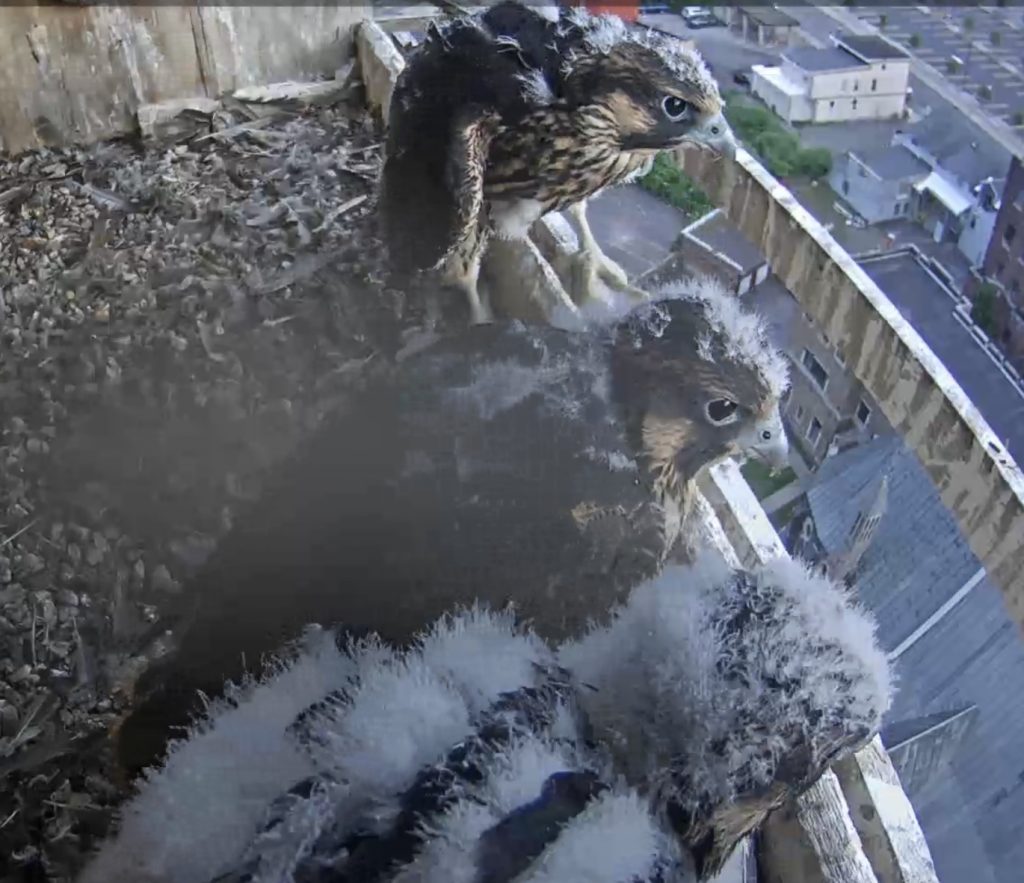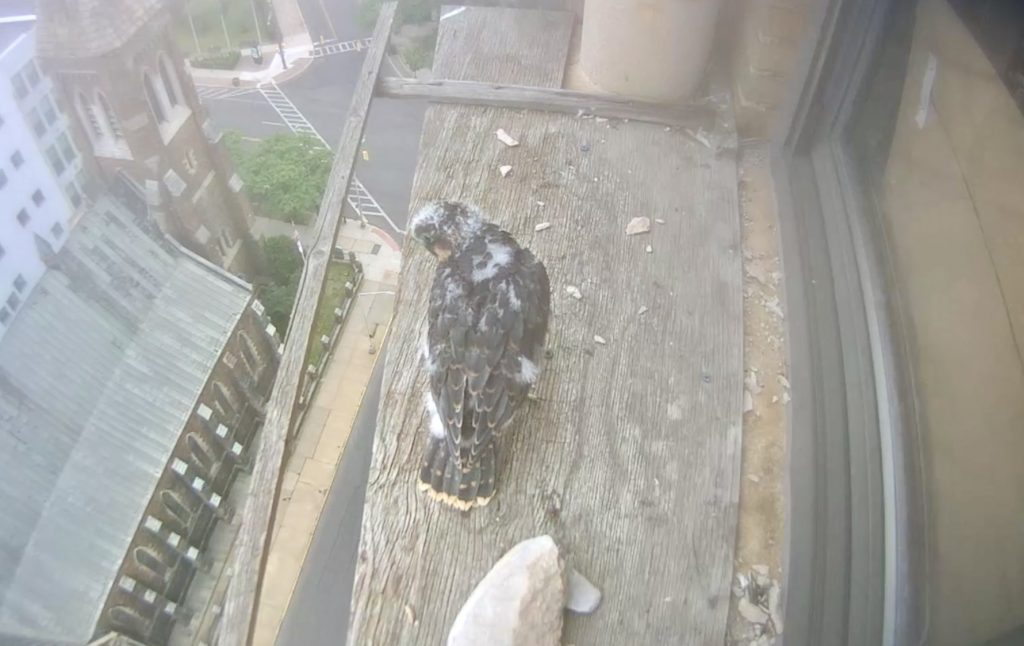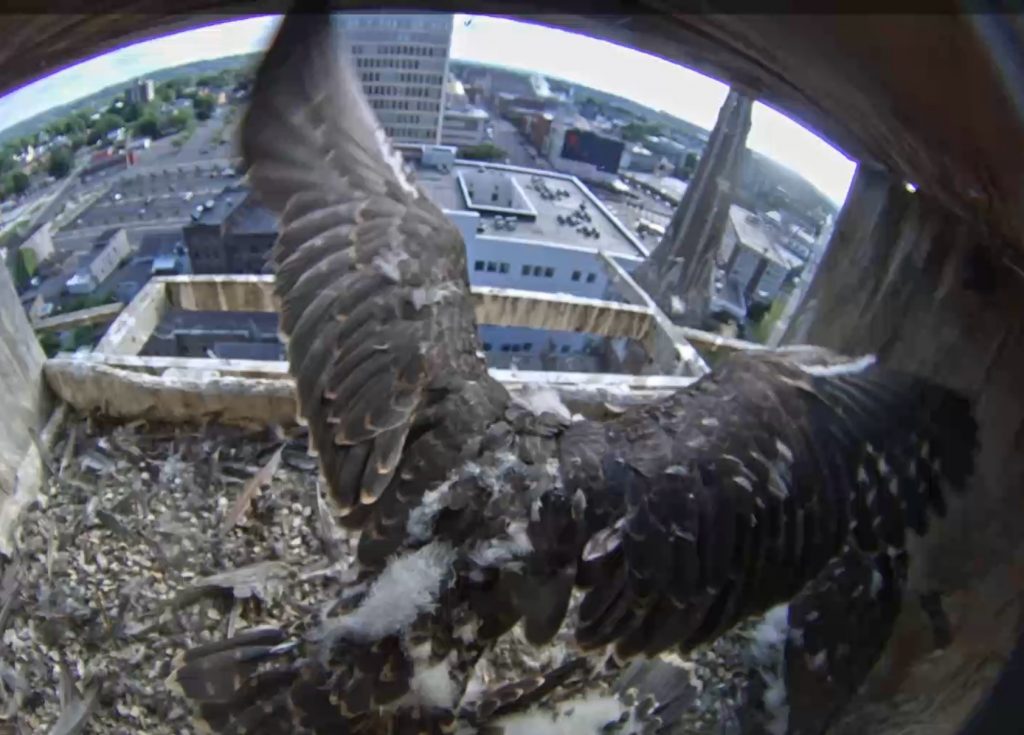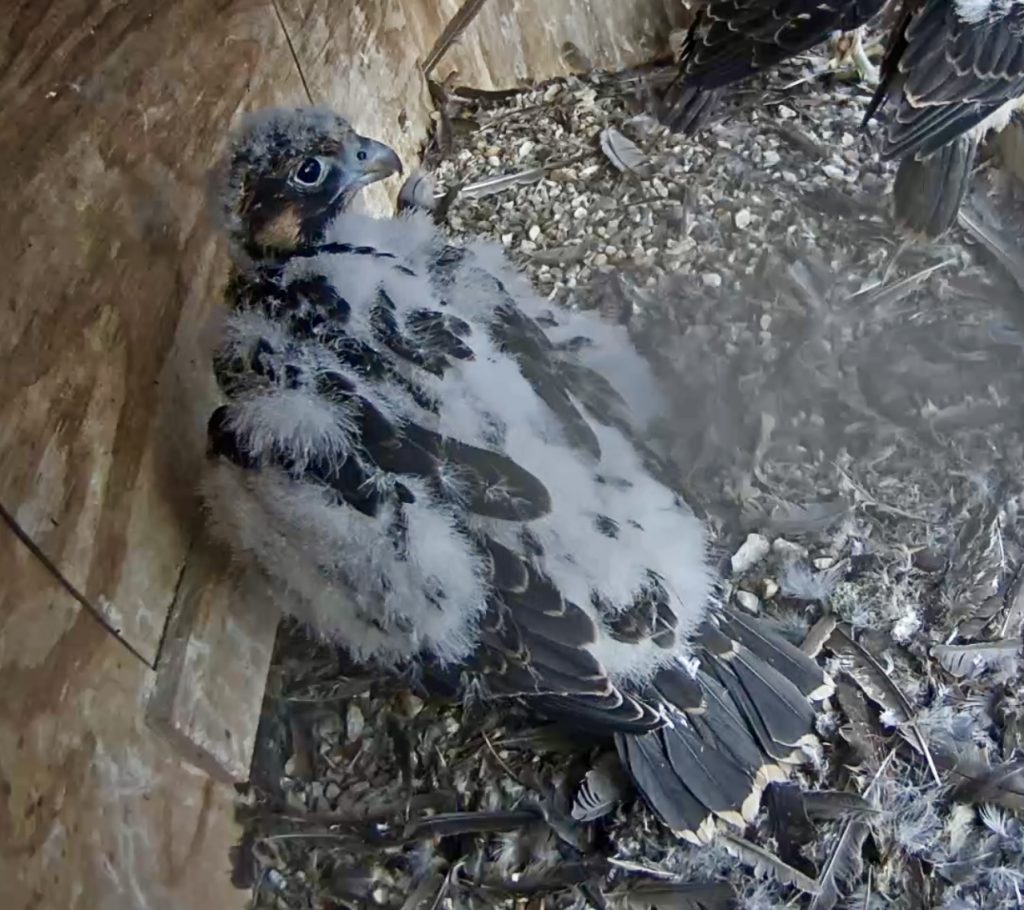Update for Monday, June 3, 2024

Ledging behavior is a critical developmental stage for nestling Peregrine Falcons, marking their transition from the safety of the nest to the broader habitat around them. This behavior typically begins when the nestlings are about four to five weeks old and involves the young falcons venturing to and beyond the edges of the nesting site. For the Utica birds, this means exploring the nestbox’s side platforms, or “verandas,” and then progressing to the window ledges beyond. This can be a perilous time for the young birds as they negotiate narrow ledges and find themselves in difficult and uncomfortable positions. However, the ledging process is vital for building their physical strength, coordination, experience, and confidence. It also provides them with their first serious problem-solving experiences as they face unpredictable and challenging obstacles. Mastering these skills is essential before the birds take their first flights.

Parental involvement is crucial during the ledging stage. Adult Peregrines, particularly the mother, often encourage their young to venture onto the ledges and practice their flying skills. The parents may demonstrate landing and take-off techniques, providing visual guidance for the nestlings. Additionally, they continue to bring food to the nest, but as the ledging behavior progresses, they may start delivering prey to more challenging locations, encouraging the young falcons to venture out and practice retrieving their meals.


